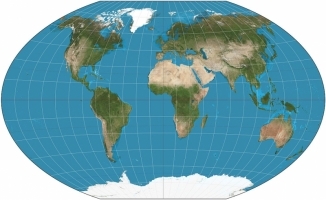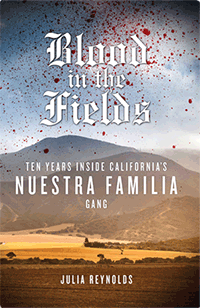 Back in 2005, Thomas Friedman's The World Is Flat made a persuasive argument that the globe was coming together on a level playing field, thanks to the equalizing forces of technology and peaceful economic competition.
Back in 2005, Thomas Friedman's The World Is Flat made a persuasive argument that the globe was coming together on a level playing field, thanks to the equalizing forces of technology and peaceful economic competition.
But nearly 10 years later, it looks instead like the world is falling part.
Among the most disturbing signs:
- Vicious gang violence afflicting cities and towns across the U.S.
- Mass killings happening roughly every two weeks in this country
- A new terrorist threat that some experts say is worse than al Qaeda
- Russia abandoning the 21st Century and expanding its borders by force.
Each of these phenomena is frequently described as "senseless." And yet here they are.
What's going on?
Here's one possible explanation: While for some the world may indeed be flat, for many others it's hollow.
Think about how you succeed in the flat world. If you're highly educated, technologically adept and culturally flexible, you can do very, very well. You have a place in history's richest global economy. You're a candidate for the 1 percent.
But if you aren't those things? You're being left out and left behind.
For many, this means relative poverty. But what may be even worse, for some, are the alienation, humiliation and meaninglessness that come with it.
In the flat world, many people feel homeless.
That feeling may help explain otherwise senseless behavior.
 From the outside -- and from above -- joining a gang looks insane. You'll likely make less than minimum wage to shoot people who are a lot like you, and you end up in prison or dead. But to young recruits, a gang doesn't look crazy at all -- it looks like family. In a gang (they're led to believe), they'll belong, they'll be respected, and their life will have meaning.
From the outside -- and from above -- joining a gang looks insane. You'll likely make less than minimum wage to shoot people who are a lot like you, and you end up in prison or dead. But to young recruits, a gang doesn't look crazy at all -- it looks like family. In a gang (they're led to believe), they'll belong, they'll be respected, and their life will have meaning.
One of the best books I've read this year -- and a must-read for anyone who wants to understand gang violence -- is reporter Julia Reynolds' Blood In The Fields: Ten Years Inside California's Nuestra Familia Gang (disclosure: I know Julia Reynolds through my work on reducing gang violence in and around Salinas, California). As Reynolds recounts, while the true business of Nuestra Familia is selling drugs, what draws and binds its Norteño street soldiers is the myth of The Cause, a highly distorted version of the nonviolent United Farm Workers movement:
Mando [a gang recruit] learned that while the Norteños' war was going on in the prisons, all that Cesar Chavez stuff was going on in the fields. The northern inmates adopted Chavez' symbol -- the Aztec-style huelga eagle -- because Chavez was taking a stand... Chavez' beliefs were pretty much the same, Mando decided. If you looked at history, Chavez wanted equality. He wanted respect [my emphasis]. It was just a different situation. [Page 62, hardcover edition.]
Although the disturbed loners who commit mass shootings look different from gang bangers, the two groups' apparently insane behaviors have similar roots. As Ari N. Schulman wrote last November in the Wall Street Journal, mass killers are seldom mentally ill:
Instead, massacre killers are typically marked by what are considered personality disorders: grandiosity, resentment, self-righteousness, a sense of entitlement. They become, says [State University of New York director of forensic psychiatry Dr. James V.] Knoll, " 'collectors of injustice' who nurture their wounded narcissism." To preserve their egos, they exaggerate past humiliations and externalize their anger, blaming others for their frustrations. They develop violent fantasies of heroic revenge against an uncaring world [my emphasis].
Compare this to what draws young men to ISIS, aka ISIL or the Islamic State. An unnamed diplomat cited Sunday by Fareed Zakaria puts it succinctly:
The most dangerous aspect of the Islamic State, this diplomat believes, is its ideological appeal. It has recruited marginalized, disaffected Sunni youths [my emphasis] in Syria and Iraq who believe they are being ruled by apostate regimes. This appeal to Sunni pride has worked largely because of the sectarian policies of the Baghdad and Damascus governments. But the Islamic State has also grown because of the larger collapse of moderate, secular and even Islamist institutions and groups -- such as the Muslim Brotherhood -- throughout the Middle East.
In other words, however deluded all these people may be in devoting themselves to murder and suicide, what's driving them is the desire for belonging, respect and meaning.
What's the connection with Russia's invasions of Crimea and Ukraine? The immediate cause of this aggression is the bad luck that Vladimir Putin is in charge. But how do we explain Putin's popularity at home, which has recently topped 80%? State control of Russian media certainly plays a part. But the fuel for Putin and his media is nationalism, which grants belonging, respect and meaning to citizens.
For the cosmopolitans who are succeeding in the flat world, nationalism can seem almost quaint, a fading background to the global pursuit of rational self-interest. (Friedman described it as the Dell Theory of Conflict Prevention.)
But for those who are failing, as Russia has been for a long time, nationalism can feel like all they have. Others turn to a gang, revenge, or a twisted form of Islam.
None of this, of course, remotely excuses invasions, gang violence, massacres or terrorism.
But it may be a warning that we can't just flatten the world.
We also have to find ways to fill it up.
Map image credit: Foter / Creative Commons Attribution-ShareAlike 3.0 Unported (CC BY-SA 3.0)
Book cover image: Julia Reynolds and Chicago Review Press.
